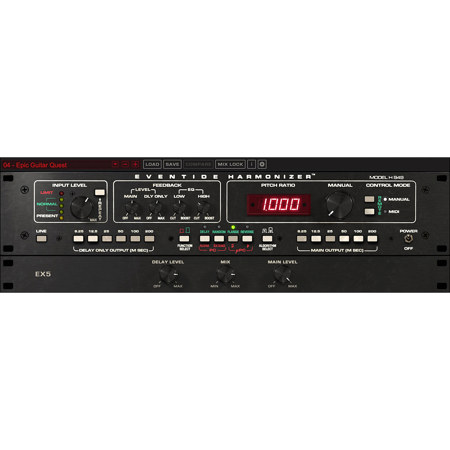


Need help? Ask our experts.
Review Summary
Accidents happen where life happens. Protect your favorite Adorama products and purchase a protection plan to stay covered from accidental damage, mechanical or electrical failure, and more.
If we can’t fix it, we’ll replace it at no additional cost.
Protect your product from drops, spills, and more.
Enjoy your gear without fear. We have you covered!
When regular use of your product over time results in mechanical or electrical failure.
We will never charge you a deductible after the purchase of a plan.
Our claims process is simple & easy and our customer service team is happy to help.
Adorama Protect powered by Extend is available for purchase to customers in the United States. Not available for purchase Internationally or in U.S. Territories.
Browse our FAQ
Windows: Windows 8 - 11
Mac: MacOS 10.9+
iLok Account Required
AAX 64-bit, AU 64-bit, VST2 64-bit, VST3 64-bit
Download
| Models | SKU: ETD1177000 MFR: 1177-000 $199.00 | ||
|---|---|---|---|
| Operating System | Macintosh, PC/Windows | Macintosh, PC/Windows | Macintosh, PC/Windows |
| Delivery Method | Download | Download | Download |
| Version Type | Plug-In | Plug-In | Plug-In |
The Eventide model H949 Harmonizer, successor to the H910, is a combination digital delay line, pitch-changer, and all-around special effects unit. The H949 used random access memories (RAM's) for high quality, dependable performance. The H949 benefited from the rapid pace of IC development with improved audio specs and much more. It represented a major advance in the very notion of an effects box and introduced the terms algorithm, random, and micro pitch to the audio lexicon. Our marketing message was simple-"more of everything."
One of the most important improvements to the H949 was taming the H910's "glitch." The H949 applied advanced technology capable of de-glitching and came with 2 algorithms to choose which splicing method to apply. The H949 was the first pitch-change box designed to be a tool for tuning; it had the necessary fine resolution and the ability to analyze audio in real-time and make decisions to avoid audible glitches. Engineers welcomed this new capability and found that they could play back a problematic track and, while monitoring, twist the big knob at the right time and by just the right amount to bring a wandering pitch in tune. In 1979, autotune was still a decade away so this process was a hands-on, real-time performance.
Features
MicroPitch
The H949 had a dedicated "MicroPitch" mode so that engineers could use it for authentic double-tracking emulation by making tiny pitch changes. The H949's display added a fourth digit and 0.1% pitch resolution and became useful as an instrument - a precision tool for tuning and tempo control.
Reverse
The H949's Reverse mode was analogous to cutting tape into 6-inch segments (-400 msec), reversing each segment, and then splicing each reversed segment in the original order. Pitch Control was active in Reverse mode so that the user could change the pitch of the reversed segments. Combined with the ability to Feedback around the reversed, delayed, and pitch-changed segments, all sorts of new sounds became possible.
Repeat
The H949's Repeat function broke new ground by having the ability to both time-reverse and pitch-change the 'captured' audio.
Flange
By including a Flange Mode, the H949 was recognized as one of audio's first "multi-effects' products.
Random Mode
Random mode introduced random variable delay at a range of 0 to 25 milliseconds. This was useful for double-tracking emulation to make the doubled vocal sound more natural and less identical to the original.
Time Squeeze
Time Squeeze allowed for speeding up or slowing down while maintaining constant pitch. This was an extremely useful tool for broadcasters who wanted to speed up program material to make room for advertisements without audibly affecting the pitch.